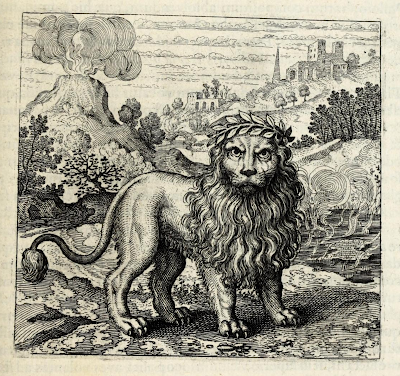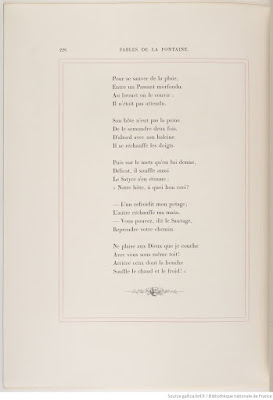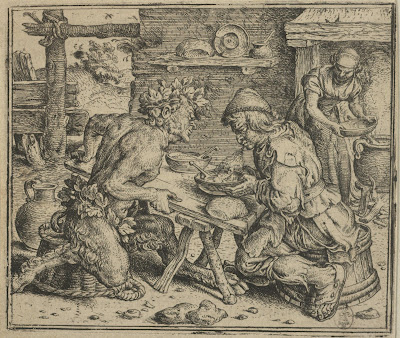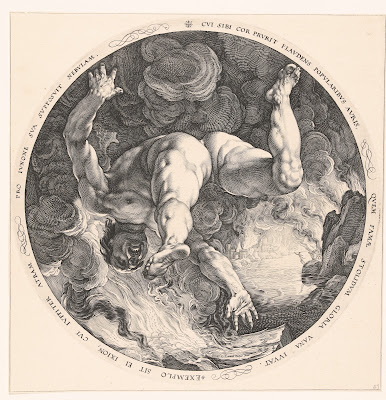according to Wikipedia, the painting's original title was L'Etoile Perdue ... the Lost Star
I would guess the title reflects on the artists compelling fantasy of feminine perfection rather than on any understanding of cosmology or of classical greek mythology ... after all she hardly seems to be lost whilst seeking her sisters
Pleiades (Greek mythology) - Wikipedia
Star Tales – Taurus 2 (ianridpath.com)
The heliacal rising (/hɪˈlaɪ.əkəl/ hih-LY-ə-kəl)[1][2][3] of a star or a planet occurs annually when it first becomes visible above the eastern horizon at dawn just before sunrise (thus becoming "the morning star") after a complete orbit of the Earth around the Sun.[4]
Historically, the most important such rising is that of Sirius, which was an important feature of the Egyptian calendar and astronomical development.
The rising of the Pleiades heralded the start of the Ancient Greek sailing season, using celestial navigation,[5] as well as the farming season (attested by Hesiod in his Works and Days).
Helical rising is one of several types of risings and settings, mostly they are grouped into morning and evening risings and settings of objects in the sky. Culmination in the evening and then morning is set apart by half a year, while on the other hand risings and settings in the evenings and the mornings are only at the equator set apart by half a year.
M45 right here, right now at Tenby in Wales at 0437 on June 22nd 2024 ...
The Pleiades, Bernard Sleigh, Russell-Cotes Art Gallery
Moritz von Schwind
Executed in 1855, Die Plejaden is a fully finished study for a tondo for a multi-paneled fresco project for the wall decoration of a music room in homage to Mozart, Beethoven, and Joseph Haydn. The project, which was never realized, was intended to comprise several panels of similar format, each celebrating a piece of music. They included one illustrating Mozart’s Die Zauberflöte, a watercolor study, which is in the Hamburger Kunsthalle and another of Beethoven’s Chorphantasie in c-moll, op. 80, the oil study for which is in the Bayerische Staatsgemäldesammlungen, Neue Pinakothek (Fig. 1). We know from an annotated pencil drawing in the Staatliche Graphische Sammlung in Munich, titled by Schwind Symphonie Nr. 3, that the present representation of the seven Pleiades was destined for a panel dedicated to Beethoven’s eponymous symphony, also known as the Eroica, op. 55.
Etc, etc ...
Inside the Art of Agnes Arellano, Sculptor of the Sacred Feminine | Muse by Clios
Project Pleiades : Agnes Arellano
Max Ernst "goes off on one" ...
Max Ernst (German, 1891-1976)
Approaching Puberty… (The Pleiades)
La puberté proche… (les pléiades)
1921
Collage, gouache, and oil on paper, mounted on cardboard
24.5 x 16.5cm
Private collection
© 2013, ProLitteris, Zurich
The Pleiades, companions of Artemis, were the seven daughters of the titan Atlas and the sea-nymph Pleione born on Mount Cyllene. They are the sisters of Calypso, Hyas, the Hyades, and the Hesperides. The Pleiades were nymphs in the train of Artemis, and together with the seven Hyades were called the Atlantides, Dodonides, or Nysiades, nursemaids and teachers to the infant Bacchus. There is some debate as to the origin of the name Pleiades. Previously, it was accepted the name is derived from the name of their mother, Pleione. However, the name Pleiades may derive from πλεῖν(to sail) because of their importance in delimiting the sailing season in the Mediterranean Sea. (Wikipedia)
For Ernst eroticism was another way of entering the unconscious, of escaping from convention, and possibly of tweaking bourgeois taste. But he was aware that adult sexuality had its limits, as is apparent in the exquisite Approaching Puberty… (1921). A photograph of a nude, faceless girl floats in a blue space stratified by horizontal lines, suggesting water or the sky. A few strangely disparate forms surround the girl, and the short text at the bottom ends, “The gravitation of the undulations does not yet exist.” The title, this line, and the fact that the girl floats in space rather than standing on the ground – as most of Ernst’s figures do – suggests that he sees in pubescence a kind of weightless freedom. In a related but nonsexual image, an Untitled c. 1921 collage, four schoolboys peer out of their classroom (from which a wall is missing) at a vast blue sky in which a hot-air balloon floats. A schoolmaster stands alone and ignored at his desk; next to him one of the boys balances a giant pencil on a pointer. What’s learned in school, Ernst seems to say, is far less important than visions of the sky.
Fred Camper. “Max Ernst’s Theater of Reveries,” on the Chicago Reader website, November 1993 [Online] Cited 12/12/2020
Elihu Vedder's 1885 painting of the Pleiades has been reproduced on metal by ARTSY
According to Greek mythology, the Pleiades were the seven daughters of Atlas and the nymph Pleione. Vedder used the Pleiades as his subject for the first illustration in the "Rubaiyat of Omar Khayyam". The seven female figures represent the horoscope of the astronomer-poet, Omar Khayyam. The two influences of Jupiter and the Pleiades, connected by the pleasure of the vine, are symbolized by the thread that entwines them. The central figure, whose thread is broken, is "the lost Pleiad."
I like the new version better.
Here's a sculpted version ...
https://philamuseum.org/collection/object/42421
myths about the seven sisters persist in the culture of native australians ...
What are the Seven Sisters songlines? | The Box Plymouth
other myths abound ... sometimes the Pleiades are represented symbolically rather than being mapped with any precision ...
Pleiades in folklore and literature - Wikipedia
people have recently learned to generate complex artwork with a new generation of so-called ARTIFICIAL INTELLIGENCE software requiring large capacity processing hardware ... at the present time, the software is having trouble with hands and eyes, but seems pretty smart at re-creating Victorian style ...
Ben Shahn took some lines from The Book of Job, written in Hebrew ... this is a passage where Job expresses some doubts about God, and God says, in so many words ... "WHO ELSE BUT ME CONTROLS THE STARS THE SEASONS AND THE RAIN ?"
JOB is a long and difficult book, subject of many interpretations, understandings and misunderstandings ...
there are many and varying translations ... varying with their historical age ...
Job 38:31–33 ESV - “Can you bind the chains of… | Biblia
the King James Version isn't helpful for 21st Century newcomers to the text ...
Essentially, in Chapter 38 God speaks to Job from a whirlwind, reminding Job and us that he is the God of all nature's forces ...
God Challenges Job
1Then the LORD answered Job out of the whirlwind, and said,
2Who is this that darkeneth counsel by words without knowledge?
3Gird up now thy loins like a man; for I will demand of thee, and answer thou me.
4Where wast thou when I laid the foundations of the earth? declare, if thou hast understanding.
5Who hath laid the measures thereof, if thou knowest? or who hath stretched the line upon it?
6Whereupon are the foundations thereof fastened? or who laid the corner stone thereof;
7When the morning stars sang together, and all the sons of God shouted for joy?
8Or who shut up the sea with doors, when it brake forth, as if it had issued out of the womb?
9When I made the cloud the garment thereof, and thick darkness a swaddling band for it,
10And brake up for it my decreed place, and set bars and doors,
11And said, Hitherto shalt thou come, but no further: and here shall thy proud waves be stayed?
12Hast thou commanded the morning since thy days; and caused the dayspring to know his place;
13That it might take hold of the ends of the earth, that the wicked might be shaken out of it?
14It is turned as clay to the seal; and they stand as a garment.
15And from the wicked their light is withholden, and the high arm shall be broken.
16Hast thou entered into the springs of the sea? or hast thou walked in the search of the depth?
17Have the gates of death been opened unto thee? or hast thou seen the doors of the shadow of death?
18Hast thou perceived the breadth of the earth? declare if thou knowest it all.
19Where is the way where light dwelleth? and as for darkness, where is the place thereof,
20That thou shouldest take it to the bound thereof, and that thou shouldest know the paths to the house thereof?
21Knowest thou it, because thou wast then born? or because the number of thy days is great?
22Hast thou entered into the treasures of the snow? or hast thou seen the treasures of the hail,
23Which I have reserved against the time of trouble, against the day of battle and war?
24By what way is the light parted, which scattereth the east wind upon the earth?
25Who hath divided a watercourse for the overflowing of waters, or a way for the lightning of thunder;
26To cause it to rain on the earth, where no man is; on the wilderness, wherein there is no man;
27To satisfy the desolate and waste ground; and to cause the bud of the tender herb to spring forth?
28Hath the rain a father? or who hath begotten the drops of dew?
29Out of whose womb came the ice? and the hoary frost of heaven, who hath gendered it?
30The waters are hid as with a stone, and the face of the deep is frozen.
31Canst thou bind the sweet influences of Pleiades, or loose the bands of Orion?
32Canst thou bring forth Mazzaroth in his season? or canst thou guide Arcturus with his sons?
33Knowest thou the ordinances of heaven? canst thou set the dominion thereof in the earth?
34Canst thou lift up thy voice to the clouds, that abundance of waters may cover thee?
35Canst thou send lightnings, that they may go, and say unto thee, Here we are?
36Who hath put wisdom in the inward parts? or who hath given understanding to the heart?
37Who can number the clouds in wisdom? or who can stay the bottles of heaven,
38When the dust groweth into hardness, and the clods cleave fast together?
39Wilt thou hunt the prey for the lion? or fill the appetite of the young lions,
40When they couch in their dens, and abide in the covert to lie in wait?
41Who provideth for the raven his food? when his young ones cry unto God, they wander for lack of meat.
The Pleiades are fairly easy to find in the 1822 Whittaker's Celestial Atlas ...
As astronomers discover more and more stars and map them more accurately ... so it becomes harder to make sense of the old constellations' identities ...
A sky map of the Hubble Space Telescope's observations | Visual Cinnamon
Messier 45: Pleiades | Messier Objects (messier-objects.com)
to be continued intermittently ...
_-_Lost_Pleiad_(1884).jpg)

.png)

.png)
.png)

























.png)






.png)














.png)



